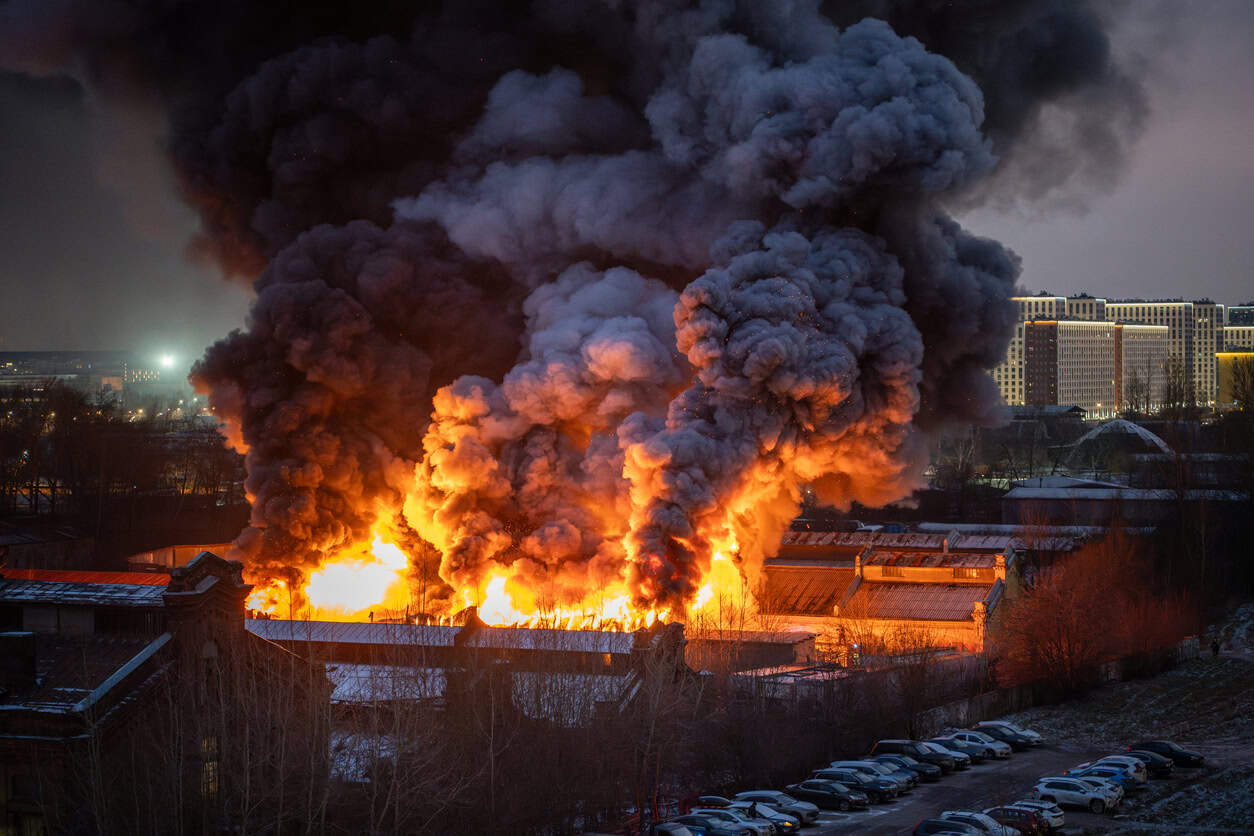Major, high-profile car park fires and tunnel incidents in the past have demonstrated the same basic failure: by the time anyone knew what was happening, it was already too late.
In the UK two cases tell this story and show the real cost of poor detection. The Liverpool Kings Dock fire of 2017 and the Luton Airport Terminal Car Park fire of 2023. A report from the Merseyside fire brigade showed the Liverpool fire destroyed 1,150 vehicles and caused severe structural damage, a clear indication of how fast modern vehicle fires can escalate. Meanwhile, the Luton Airport fire had a major operational impact, affecting 1,300 vehicles and causing disruption for months.
These incidents have exposed a consistent problem: legacy standards, systems designed for a bygone era, and a culture that treats detection as a checkbox rather than a life-saving tool.
The pattern we keep repeating
There is a substantial gap between laboratory or design assumptions and real-world conditions. This means detection systems that have been specified for decades aren’t fit for purpose when faced with modern cars, tighter spacing and plastic or fuels that burn hotter for longer. Research[1] from 1968 simply isn’t enough to keep pace with current vehicles and environments.
This leads to significant problems such as late or manual detection. Interestingly, in both cases, the initial alert didn’t come from the fire detection systems but was raised by a member of the public who saw the flames and called from a mobile phone. Response teams also suffer from a lack of precise location data; in the Liverpool fire, the response team was sent out to fight the fire on the wrong level of the car park, completely missing the growing threat on other levels. A lack of targeted response increases danger to civilians and first responders as well as increasing the damage to vehicles, infrastructure and assets. To make matters worse, systems are often installed and forgotten about, which is a serious issue when dealing with systems that require adequate and continuous maintenance and realistic testing to operate successfully.
By contrast, some countries, including the Netherlands, Norway, and Turkey, enforce stricter commissioning and are more accepting of distributed sensing solutions. When regional regulation changes are made, they drive adoption, and the market uptake increases. So, the route to improved fire detection is simpler than it seems.
The cost of complacency
The fire at the Liverpool Kings Dock in 2017 is the perfect example of how a small fire can rapidly escalate if not dealt with properly. Initially the fire was confined to a single car, but undetected, it was allowed to spread rapidly, causing structural damage and catastrophic asset loss. Observations from engineers after the fire noted that extreme heat caused spalling and structural failure, which shows that modern car fires behave more like petrochemical events in some cases.
The Luton Airport car park fire was a similar incident. From a small vehicle fire, the blaze spread, leading to a partial collapse of the car park, major flight disruption and multiple firefighters treated for smoke inhalation. The Bedfordshire Fire Brigade published a report concluding that the absence of sprinklers contributed to the extent of the blaze and recommended the consideration of mandatory suppression for car parks.
Both these events show that when detection and suppression lag behind modern fire dynamics, human life is put at risk, financial and operational costs soar, and the fire response is hindered.
What other countries are getting right
In the Netherlands they have strict commissioning standards, such as pan-fire testing, to set a high bar for what a detection system must detect in car parks. Our fiber optic linear heat detection systems are among the few solutions that can pass these tests.
Norway makes consistent regulatory updates for tunnels and infrastructure and are creating new demand for systems to meet these regulations. This goes to show that regulatory change is a powerful adoption driver.
In clusters across the globe, peer adoption drives improved fire detection systems. Successful installation and operation in one country or state often leads competitor sites to follow, creating clusters of development and regulatory improvement.
Where regulators or clients demand performance-based testing instead of checkbox compliance, the uptake of contemporary solutions like fiber optic linear heat detection increases.
How modern technology could have altered outcomes
Simply put, fiber optic LHD uses continuous distributed sensing along every metre of fiber, not single-point sensors. Rate of rise and deviation alarms detect thermal anomalies early, often before visible flame or significant smoke. The system allows pinpoint location targeting; to within 1 metre, enabling targeted response to reduce search time.
If we apply the LHD system capabilities to the two incidents, it leaves us with a very different result. In either scenario a distributed LHD system installed throughout the car park with sensors spaced appropriately to the volume of cars would be able to detect the initial blaze within seconds of it spiking in temperature. This would raise an alarm, alerting operators with the exact location and triggering automated responses. Early intervention would stop the blaze in its tracks, preventing hundreds of thousands of pounds of damage and disruption to business. Each system pays for itself over and over by averting each incident.
LHD is even stronger when integrated with suppression, ventilation control, SCADA and CCTV, the system becomes an active control loop from detection to isolation and suppression.
Why does change still lag?
A more conservative consulting culture has a huge impact on regulatory change. Many consultants and standards bodies err on the side of caution, adopting new technology slowly and requiring extensive proof before approving new sensor types for certain applications. Despite fiber optic LHD having been used since the 1980s, many still regard it as new because they haven’t revisited it in years.
Standards are often deliberately set more conservatively for safety and are then slow to move. Significant incidents often prompt regulatory change, but this is reactive rather than proactive. It’s time for those in the industry and standards bodies to take Bedfordshire Fire’s recommendations: mandating automatic suppression for open multi-storey car parks and stronger detection systems.
Cost can be a barrier to fiber optic LHD, as the systems are seen to have a higher upfront cost than other point sensors. But the cost per metre and long-term reliability make it cost-effective at scale, and the technology is more cost effective for operators over time. The lifecycle and complexity of these systems are also misunderstood, but the reality is completely opposite, with their long lifecycle and lack of complex maintenance being a key benefit.
From reaction to prevention
Repeated fire safety failures show a pattern: that modern risks demand modern distributed detection and integration, not legacy point sensors and box-ticking compliance.
It’s time for asset owners, consultants and regulators to reassess risk with the current operating realities of different environments and prioritise performance-based procurement with strict commissioning standards. Consider fiber optic detection as a core element of a layered fire strategy; it’s proven itself in numerous projects like the Turin Metro and parking applications to provide earlier alerts and precise location information.
Learning from these failures is no longer optional; it’s vital to prevent future catastrophes. Our partners are part of this change, bringing effective, safer fire detection solutions to industries across the globe. If you’re ready to make a difference, here’s how: Join our global network of partners.
[1] , The Ministry of Technology and Fire Offices’ Committee Joint Fire Research Organisation produced Fire Note No.10, “Fire and Car-Park Buildings”



